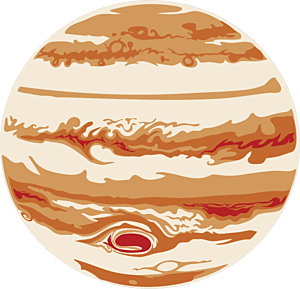The Downlink • Jan 10, 2025
Up close and personal
An update from the LA fires
The Planetary Society's headquarters are located in Pasadena, CA, and many of our staff live in this area. The wildfires in LA County have displaced several of our team members, and some are dealing with significant losses. We are pausing some of our normal operations while we respond to the immediate situation, and our offices will be closed until Monday, Jan. 13 at the earliest. We appreciate the patience of our members and supporters during this time.
Space Snapshot

This image from NASA’s Solar Dynamics Observatory shows the Sun as it appeared on Jan. 8, 2025. This spacecraft observes the Sun from Earth orbit, about 150 million kilometers (93 million miles) from the Sun on average. Another NASA mission just got a whole lot closer. The Parker Solar Probe made history in late December when it flew just 6.1 million kilometers (3.8 million miles) above the surface of the Sun, making it through the pass safely. Close passes like this allow the Parker Solar Probe to study the Sun like no other spacecraft can. Image credit: NASA SDO.
Fact Worth Sharing

The Parker Solar Probe’s recent ultra-close pass of the Sun sped it up to record-breaking speeds. At its fastest, it traveled at a staggering 692,000 kilometers per hour (430,000 miles per hour), or about 192 kilometers per second (119 miles per second).
Mission Briefings


A new study explains how Pluto and Charon may have formed together. According to new simulations, the dwarf planet and its largest moon may have formed from a collision between two icy bodies. While other moons, including Earth’s, likely formed from impacts as well, the Pluto-Charon system appears to be different in that both objects likely remained largely intact during their collision, becoming temporarily stuck together and rotating as a single object before separating into the binary system we see today. Pictured: A composite of enhanced color images of Pluto (lower right) and Charon (upper left), each taken by NASA’s New Horizons spacecraft in 2015. Image credit: NASA/JHUAPL/SwRI.

NASA is refining its plans to bring samples back from Mars. On Tuesday, the agency announced a new approach to its Mars Sample Return program, aiming to significantly reduce costs and speed up the project’s timeline. The plan is to simultaneously pursue early planning of two landing architectures, encouraging competition and innovation, and then later select a single path forward from among the two. Read The Planetary Society’s statement in response to this announcement.

NASA astronauts Butch Wilmore and Suni Williams will stay even longer on the ISS. The two astronauts were originally meant to be on the International Space Station for eight days, but their stay was extended to over eight months because of problems with Boeing’s Starliner vehicle. Now, delays with SpaceX’s new Crew Dragon spacecraft may mean the pair will be on the ISS for as long as 10 months.

Chinese taikonauts have broken the spacewalk record with a nine-hour excursion. Taikonauts (the Chinese term for astronauts) Cai Xuzhe and Song Lingdong recently spent just over nine hours working on the outside of the Tiangong space station, carrying out tasks such as installing space debris protection devices.
From The Planetary Society


Planetary Society CEO Bill Nye was awarded the Presidential Medal of Freedom. In a ceremony on Jan. 4, President Joe Biden awarded Bill Nye the United States’ highest civilian honor to recognize his contributions to the nation and the world. The White House’s statement said, “Bill Nye has inspired and influenced generations of American students as ’Bill Nye the Science Guy.’ His dedication to science education continues through his work as CEO of The Planetary Society and as a vocal advocate for space exploration and environmental stewardship.”

Our members can make big contributions as space advocates, too. At our annual Day of Action, Planetary Society members come together in Washington, D.C., to speak with their representatives in Congress about the importance of investing in space science and exploration. In-person meetings are the most impactful form of advocacy. The 2025 Day of Action takes place on March 24. Sign up before Jan. 31 to take advantage of early-bird registration prices.

On Nov. 22, 2024, Emily Calandrelli became the 100th woman to venture into space. On this week’s episode of Planetary Radio, Emily shares her experiences on the Blue Origin voyage, what she took to space, and how motherhood influenced her reaction to seeing Earth from space.

This month on Planetary People: Lou Friedman. Planetary People is a live Q&A series that connects our members with people at the forefront of space science and exploration. This month's guest is Planetary Society co-founder Louis Friedman. Celebrating our 45th anniversary, Lou will share stories from the earliest days of the Society and talk about his work at NASA's Jet Propulsion Laboratory, including the Voyager missions, the Mars program, and more. Planetary Society members can join the live event on Jan. 15 in our online member community. Not yet a member? Join today!
What's Up

This is a great month for planet-gazing! In the evenings throughout the next week, from west to east along an approximate line crossing the sky, you can see super bright Venus, yellowish Saturn, very bright Jupiter, and reddish, very bright Mars. If you’ve got binoculars you might see Uranus as well, and a telescope could get you Neptune. Learn more about everything to look for in January’s night skies.
Help save space missions. Join today!

If you are not already a member, we need your help. NASA is at a crossroads, and your support is needed today! Funding for space science and exploration is not guaranteed. It requires the voice of passionate advocates like you.
NASA is facing major budget cuts for the first time in a decade, and thousands of skilled scientists, engineers, and technicians have already been laid off at NASA centers across the US. NASA funding must grow, not shrink, if the agency is to succeed in returning to the Moon, exploring the Solar System, and seeking out life beyond Earth.
We must prevent future budget cuts. When you become a member of The Planetary Society, you join the world’s largest and most influential space advocacy nonprofit. Will you join us and enable the future of space exploration?
Wow of the Week

The Parker Solar Probe’s recent close pass reminds us of another epic moment from that mission. In 2021, the spacecraft entered the Sun’s corona for the first time, sending home images stitched together into an astonishing video showing coronal streamers, distant planets, and even the Milky Way galaxy passing by. Watch the video with commentary from Bill Nye to learn more about this truly awesome moment in exploration. Pictured: One of the images from the video showing the Milky Way and a planet in the background. Image credit: NASA.
Send us your artwork!
We love to feature space artwork in the Downlink. If you create any kind of space-related art, we invite you to send it to us by replying to any Downlink email or writing to [email protected]. Please let us know in your email if you’re a Planetary Society member!


 Explore Worlds
Explore Worlds Find Life
Find Life Defend Earth
Defend Earth

